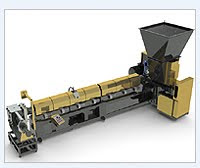When all of the functional elements have been evaluated for use and all interfaces and connections between elements matched for effectiveness and economy - community developed an ISWM system.
In dealing waste there are two fundamental requirements;
- Less waste
- Effective system for managing waste still produced
The costs of raw materials and energy, and rising disposal costs for commercial and industrial waste will ensure that waste reduction continues to be pursued by industry for
- Economic
- Environmental reasons
Designing an effective solid waste management systemStrive for both of the following;
- Environmental sustainability
- Economic sustainability
To achieve these, the system should be integrated; a system that deals with
- All types of solid waste materials
- All sources of solid waste (domestic, industrial,...)
- After waste collection and sorting
Note that to handling all waste in an environmentally sustainable way requires a range of the treatment options.
Landfill is the only method that can handle all wastes alone but may posses environmental problems.
Using other options before landfilling can reduce or eliminate some waste streams, reduce volume, improve physical and chemical stability of the residue space requirements decreases and also environmental impacts decreases.


